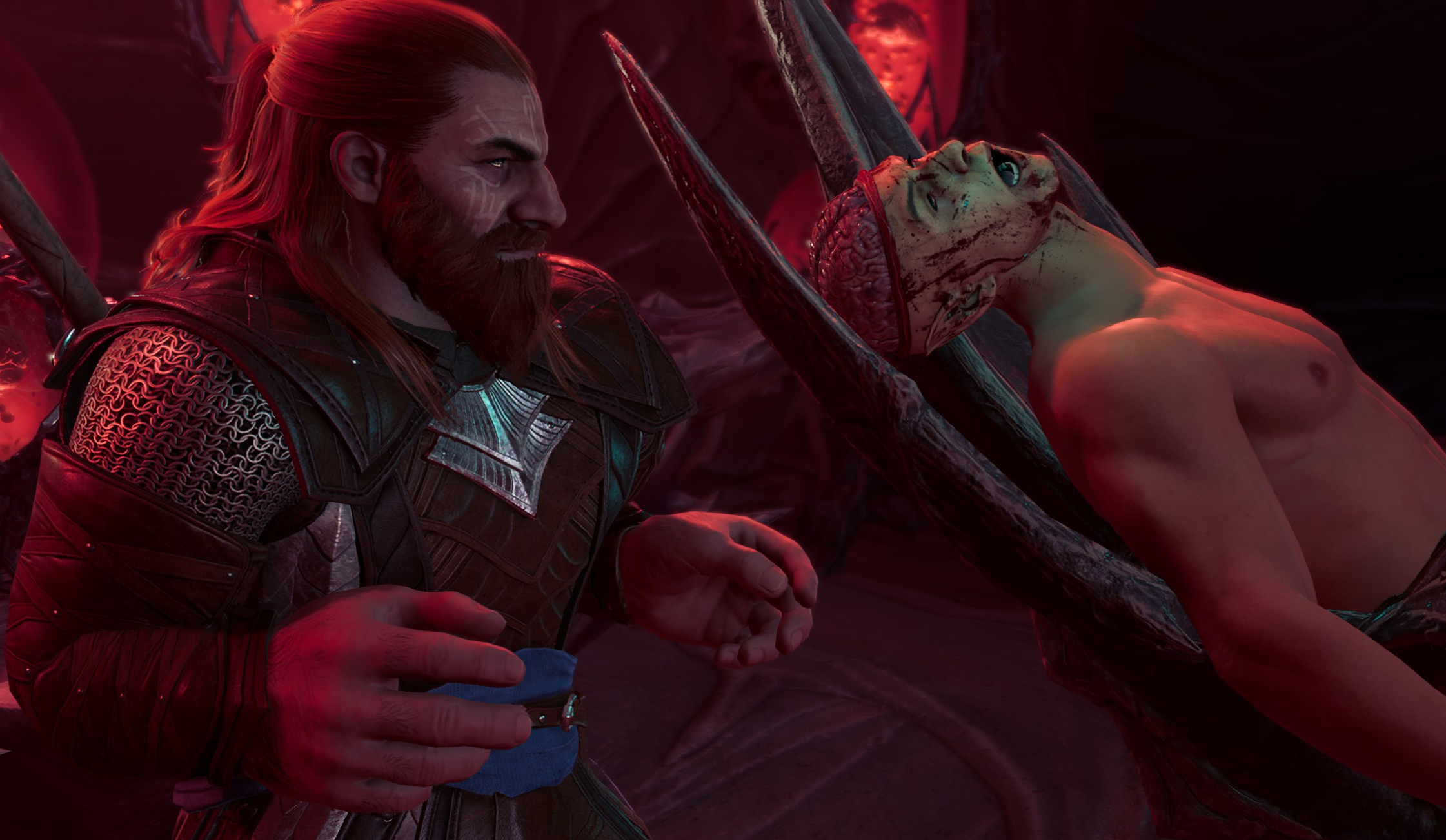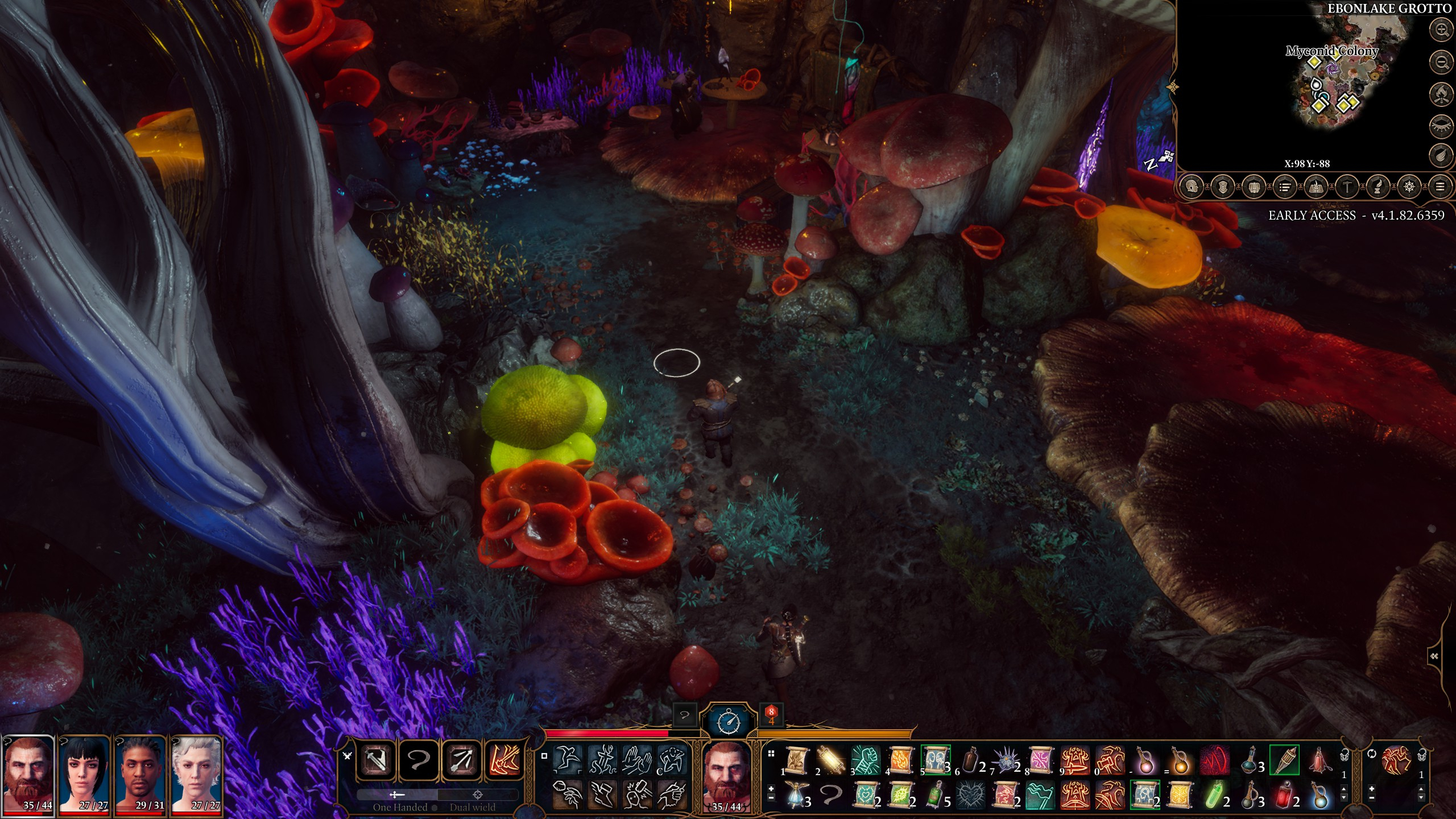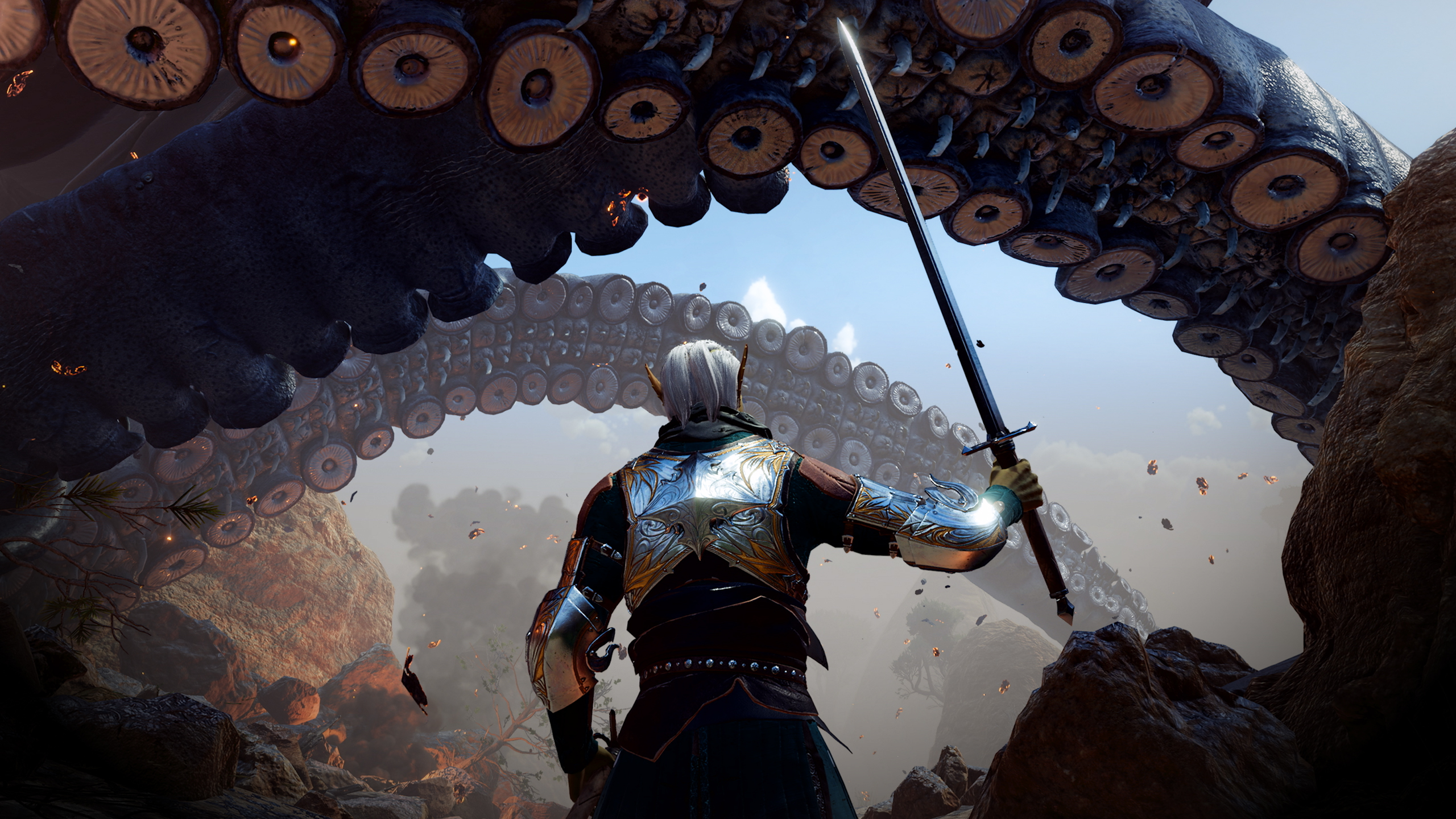Baldur's Gate 3 Early Access review: It's finally here and I can't stop pushing people off ledges
Keep your magic swords, I've got gravity on my side.

Baldur's Gate 3, which launches in Early Access today, feels like it's trying to make up for lost time. There are no humble beginnings here—instead we're treated to interdimensional ships, psychic squid monsters and jaunts down into the Underdark. And that's before even visiting the city itself, which is currently inaccessible.
As the series' new Dungeon Master, Larian Studios wants to make an impression quickly, setting you on a high-stakes adventure with a sense of urgency that can only come from being implanted with a tadpole that's turning you into a squid-faced mind flayer. It's only slightly undermined by my compulsion to stop every few minutes to push people off ledges.
The ability to shove people has made its way over from D&D proper, and with Baldur's Gate 3's very tall design, there are plenty of opportunities to use it. Sneaking up on, say, an oblivious gnome and knocking them into the abyss is the most obvious use, but it can also come in handy if you want to push someone into some fire or poison, or line up some enemies for an attack that strikes an entire row.
In my party of four, I have an arsenal of magic missiles, animal companions, curses and a barbed spear designed to gouge out eyes, but I always try to go for the environmental kills. Agent 47 could really thrive in Faerûn. Unexpected murder weapons are my second choice, if there's no room for accidents. Almost every object can be turned into a weapon in a pinch—one of my first kills was with a skull that I picked up and tossed at a monster. Thanks, Skully.
This is a side of D&D that was previously missing from Baldur's Gate—the creative, messy sandbox. Every confrontation is an opportunity to push your luck and stretch the game's systems like you're negotiating with a DM. Thankfully, Larian's pretty easy-going, letting you use all sorts of questionable strategies as you fight and explore, like stacking crates to get height advantages, or the classic 'plucking explosive barrels from your inventory and tossing them at enemies' gambit from Original Sin.
Along with the ability to shove people and throw objects, you can stealthily slink around, make superhuman leaps, dip your weapon in puddles of acid or ignite them using a torch. These abilities can all be used in turn-based battles at the cost of an action or bonus action, as well as freely when you're wandering around in real-time.

Wherever there's the potential for a fight—so pretty much everywhere—there are torches, crates, scattered objects, barrels filled with volatile substances, ladders and ledges, giving you so many ways to get an advantage. That's if you decide to fight at all. Having a mind flayer tadpole in your brain, it turns out, gives you the power to influence people, at the risk of giving into the alien infection. And depending on how you've developed your character, you might be proficient in the arts of persuasion and intimidation, letting you talk your way out of trouble.
Keep up to date with the most important stories and the best deals, as picked by the PC Gamer team.
In an early fight, which I got into after failing to sweet talk some bandits, I was able to send a rock crashing down on top of them, breaking the ground and letting me leap down to the level below. Down the hole were more enemies waiting for me, hanging out inside a dungeon that would have been otherwise hard to get into. It's not a trick I've encountered since, but it's a smart introduction to the literal depth of Baldur's Gate 3's environments.
My most memorable scrap happened inside a goblin camp, one of the first act's most densely-packed areas. I'd talked my way through most of it so I could assassinate the leaders of a cult, but the final boss was surrounded by lots of mates. To prepare, I sent my rogue up to the rafters, several levels above everyone, so when the battle started they were able to rain terror down from on high, murdering goblins with sneak attacks. I also managed to push some guards into the spider pit below, where they became a delicious snack for my temporary eight-legged allies. The spiders then managed to escape, alerting more goblins and adding more meat to the battle. It quickly grew out of control and, lamentably, I did not make it out alive.

The complexity of these locations is a great boon for battles, but it also makes exploration a more engaging part of the adventure. There are countless ways to get around, going under and over obstacles, or using your skills to uncover hidden routes. The Underdark in particular is bewilderingly elaborate, requiring a lot of stumbling around and leaps of faith as you bound between mushrooms perilously sticking to the side of cliffs. It's a bit laborious, spelunking through the fungal labyrinth, but the journey feels like a proper expedition into the unknown.
Travelling through any inhospitable wilderness is better with friends, and failing that a party of bickering, flirting acquaintances will do. You'll quickly gather up all of the five available companions, each of whom also has a mind flayer tadpole in their head. They're all hot messes, shrouded in secrets, rich in drama and, yes, thirsting for some romance. Like Original Sin 2, these are origin characters that you'll eventually be able to pick at character creation, not just recruit, but at the moment it's only possible to create a custom character with a less fleshed out background.
Between pithy exchanges and playful ribbing, companions offer helpful bits of insight and keep their eyes out for secrets. Everyone in the party carries their weight, with their skills painting a clearer picture of the world. A character with a proficiency in religion, for instance, might be able to decipher a religious inscription, while a perceptive character is more likely to spot monster tracks or the tell tale signs of a secret door. When first venturing into the Underdark, it was only thanks to one of my companions' knowledge of nature that I was able to deftly avoid walking right up to an exploding mushroom.

Baldur's Gate 3 is always rolling dice and making passive skill checks to determine if you're going to notice that sliding bookcase right in front of you. These happen automatically, accompanied by the comforting rattle of dice, but dialogue and active skill checks actually replicate some of the tactile delight of real tabletop roleplaying by making you manually roll a digital D20.
If you want to persuade some fish that the god they're making sacrifices to is actually a very poor imposter, you click on your die, mutter prayer to Tymora, the goddess of luck, and watch it roll. It's a source of genuine tension and I love it to bits, though I suspect I might be less enthusiastic about making individual rolls to disarm a room filled with traps by hour 100.
The rules and systems are drawn from D&D, but the presentation has a lot in common with modern cinematic RPGs. Baldur's Gate 3 still feels most comfortable when played as an isometric RPG, but it benefits greatly from close-up cinematic dialogue and lively cutscenes. The mo-cap animations and detailed character models make the game's denizens more expressive and charismatic, and I'll never tire of watching my dwarf put his fingers to his temple, just like Professor X, when he's rooting around in someone's mind.


Baldur's Gate 3 Early Access Review
Baldur's Gate 3: Everything we know
Baldur's Gate 3 tips: Start smart
Baldur's Gate 3 classes: Find your perfect profession
Baldur's Gate 3 races: Pick your favorite face
Baldur's Gate 3 companions: Learn who's who
As dragons bombarded the flying mind flayer ship in the game's opening sequence, the camera focused on my stern dwarf's lumpy face, ginger hair billowing in the wind and illuminated by the fiery sky, and he looked so majestic that I just had to stop the conversation and soak it all in. It really is a sumptuous game, but it's also during these cutscenes and conversations where it's most noticeably a work-in-progress. Almost every chat I've had has been visited by a glitch of some kind, whether it's wonky physics making mind flayer tentacles take on a life of their own, characters becoming freakishly contorted or my entire party choosing to all stand in exactly the same spot.
There are plenty of other rough edges, naturally. I only experienced one crash, but I encountered lots of smaller issues, some of which Larian has been tackling in pre-release updates in the run up to the Early Access launch. It's expected to be in development for around another year, with more classes, races and other features still in the works. The first act still swallowed me up. It got me the first time I punted a dude off a cliff, and I just didn't stop playing after that. I'm a bit deflated now that my party is gone—the save is no longer compatible—and they'll never reach Baldur's Gate, but we killed some cultists, wiped out some goblins and we got to end it all with a lovely cruise through the bowels of Faerûn.
With its turn-based battles, different art style and focus on systemic shenanigans, Baldur's Gate 3 isn't an attempt to resurrect an old series. It's something new that pushes the systems and creative mayhem from Original Sin and combines them with the rules D&D. And they're perfect together. It's very promising and seems to be heading in the right direction, but should you buy in now? There's a good 25-30 hours of adventuring to be had, full of memorable fights and characters, but you won't be seeing the game at its best. It's already fun, but it's a bit janky, save wipes are guaranteed and, more importantly, you can't yet make a gnome illusionist, so really what's the point?

Fraser is the UK online editor and has actually met The Internet in person. With over a decade of experience, he's been around the block a few times, serving as a freelancer, news editor and prolific reviewer. Strategy games have been a 30-year-long obsession, from tiny RTSs to sprawling political sims, and he never turns down the chance to rave about Total War or Crusader Kings. He's also been known to set up shop in the latest MMO and likes to wind down with an endlessly deep, systemic RPG. These days, when he's not editing, he can usually be found writing features that are 1,000 words too long or talking about his dog.

